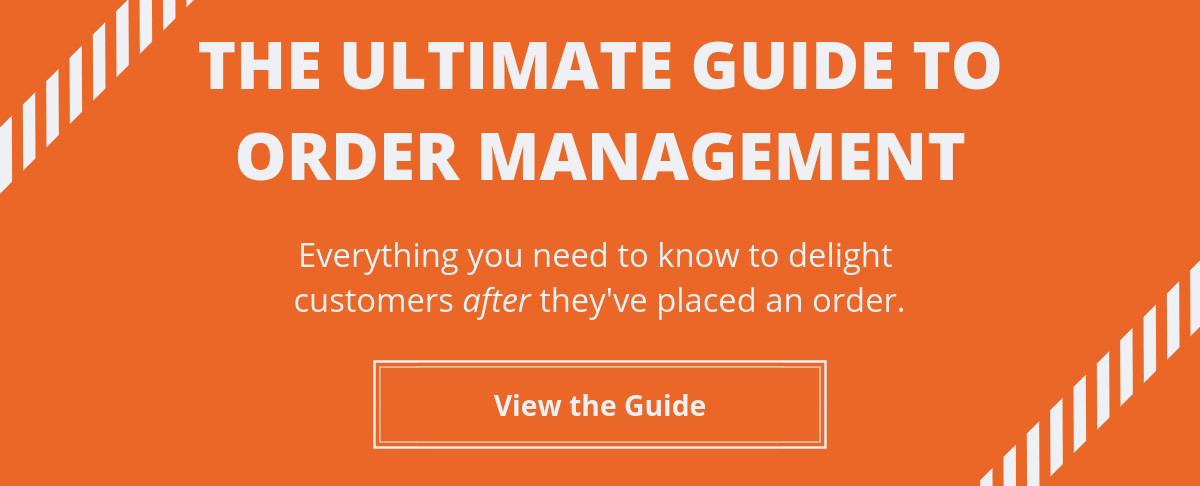For any eCommerce merchant, order management demands close attention 365 days a year.
Once a customer completes a purchase, their order comes alive, and it must be monitored every step of the way. From routing through fulfillment, shipping, and delivery (and, yes, returns), all of the processes involved demand visibility, transparency, and control.
Order management KPIs (Key Performance Indicators) provide brands with powerful tools to measure how well they are executing those operations, and the importance of this data cannot be overstated. The cumulative work and investment that goes into converting a shopper can go to waste if poor order management results in delays, errors, and/or returns.
At SkuNexus, we design order management software to help online retailers optimize every step of the process. By using KPIs applied throughout the entire order life cycle, companies can gain actionable insights, from highly specific to very broad, depending on the metric being used.
We are providing here what we consider to be the 11 most important order management KPIs. Armed with this information, merchants can get a holistic view of their business model to see what’s working, what could use some improvement, and what demands critical attention.

Order Fulfillment Cost KPIs
While order fulfillment presents opportunities for cost-saving efficiency and accuracy, it can also yield costly inefficiency and inaccuracy. These KPIs help illuminate those costs in a competitive environment where margins can be razor-thin.
1. Cost per OrderDefinition: Cost of warehouse labor, shipping charges and all other expenses required to deliver the order to a customer.
Formula: Total fulfillment costs for given time frame/Total # of orders
— This is a fundamental metric at the heart of any eCommerce merchant’s business, yet it is also one with a myriad of opportunities for improvement. Mapping out workflows and eliminating manual processes wherever possible is an excellent first step toward lowering the highest cost for any business – labor. Implementing automation via management software will accelerate processes, reduce errors, and increase productivity at every stage of the order life cycle.
2. Shipping Cost per OrderDefinition: Average cost of delivering orders to customers.
Formula: Total shipping costs for given time frame/# of successful deliveries
— Shipping costs can be reduced in any number of ways. An OMS (Order Management System) will generally route the order to the fulfillment location nearest the customer. In addition, software integrated with carriers can monitor their ever-fluctuating prices and select the best option. Merchants may also choose to bundle items together to encourage shoppers to purchase more than one product, yielding a higher order value with the same shipping cost.
3. Order Picking Accuracy
Definition: Percentage of orders picked error-free.
Formula: (# of orders picked & verified accurate prior to shipping/Total # of orders picked in time frame) x100
— Few things disappoint a shopper more than receiving the wrong item - it will be returned at your expense and the customer may never return to your store. Fortunately, the total, or near-total, elimination of picking errors is a viable goal for eCommerce merchants of all sizes. Tightly-controlled receiving and putaway operations can ensure items are in the right place, and rigorous barcode scanning and automated picklists help provide the framework to achieve as close to 100% picking accuracy as possible.

Order Fulfillment Time KPIs
In eCommerce order management, time is of the essence, and shaving off precious seconds, minutes and hours during fulfillment is an ever-present goal. Streamlined workflows and optimized processes help deliver those time-savings, and your customers reap the benefits.
4. Internal Order Cycle TimeDefinition: Average length of time between order placed and shipped.
Formula: Cumulative # of days between when customer orders are placed and shipped/Total # orders in time frame
— By eliminating shipping time from the equation, this KPI provides a focused look at your fulfillment processes. Any increases here demand review of picking and packing and may suggest increased automation is needed.
5. Order Fill RateDefinition: Percentage of orders fulfilled from stock on-hand.
Formula: (# of orders shipped/# of orders placed) x100
— A high order fill rate suggests well-executed demand planning, optimized inventory control, and aids in efficient order processing and quick delivery times. Issues here can be the result of poor inventory management and lack of inventory sync between channels, as well as unforeseen demand spikes/supply chain hiccups. A major software system upgrade may be necessary to solve these problems.
6. Orders Picked per Hour
Definition: Average number of orders picked per work hour.
Formula: Total orders picked/Total hours worked in picking
— A critical gauge of worker productivity. Elimination of manual decision-making for pickers through automation is an excellent way to improve this metric and increase picking accuracy simultaneously.
7. Order Fulfillment Cycle TimeDefinition: Internal order cycle time combined with shipping duration.
Formula: (Cumulative # of days between when customer orders are placed and shipped/Total # orders in time frame) + (Cumulative # of days between order shipped and delivered/Total # of orders in time frame)
— Customers now (should) receive detailed shipping and delivery information once their order has been processed and fulfilled, and speed is a priority - they want their items as quickly as possible. Optimized workflows throughout picking and packing can both reduce processing time and provide a competitive advantage. If your fulfillment operations are efficient, and this KPI is high, you may have an issue with the shipping carrier(s).
8. On-Time shipping RateDefinition: Percentage of orders shipped on or before expected shipping date.
Formula: (# orders shipped on time/Total # orders shipped over same period) x100
— On-time shipping is the successful culmination of your other fulfillment operations and a key to customer satisfaction. The ability to make an accurate shipping date promise, and adhere to it, signifies an organized, disciplined warehouse. A continual failure to meet projected ship dates needs immediate attention to identify where breakdowns are occurring.

Additional Order Fulfillment KPIs
9. Return RateDefinition: Percentage of delivered items being returned.
Formula: (# of orders returned/Total # of orders) x100
— The scourge of any online retailer, yet a significant part of the business, returns cost money. They mean refunds, time and labor (and shipping) devoted to reverse logistics, and potentially dissatisfied customers. In addition to issues of product quality, return rates can be impacted by inaccurate picking and items damaged during fulfillment/shipping. Identifying where the problems lie is vital for any business experiencing elevated rates of return.
10. Scrap Rate
Definition: Percentage of delivered items, returned or otherwise, that cannot be resold.
Formula: (# of scrapped orders/Total number of returns) x100
— Scrap rates generally revolve around damaged goods which cannot be restored, and this KPI is also increasingly relevant as more eCommerce merchants offer consumable items which can spoil, melt, etc. Proper packing materials for fragile and/or perishable products are necessary, and automated packlists can ensure they receive exactly what they need for protection during shipping (insulation, dry-ice, et al). This is an oft-overlooked yet excellent measure of the value of tightly-controlled order management.
11. Perfect Order Rate
Definition: Measurement of how many orders ship without any issues whatsoever.
Formula: [(# orders delivered on time / # orders) x (# orders complete / # orders) x (# orders damage free / # orders) x (# orders with accurate documentation / # orders)] x100
— An aspirational KPI for any merchant whose fulfillment operations are well-optimized. This metric reflects sound order management, a disciplined and focused workforce, efficient processes, and, ultimately, satisfied customers.
At SkuNexus, our goals are aligned with our clients, and we strive to design order management software solutions so that all their KPIs, regardless of category, are moving in the right direction.
If you would like to learn more about SkuNexus and what we can do for your eCommerce business, please schedule a demo.
And, if you would like to read more of our ongoing insights, please subscribe to our blog.
Editor's Note: This post was originally published in 2018 and has been completely revamped and updated for accuracy and comprehensiveness.
To take a deep dive into order management, check out our Ultimate Guide:









